Hello, this is Tsuchida.
I attended MOCO2024 held from May 30 to June 2, 2024, and I would like to briefly share the details of the event.
Background of MOCO
MOCO: International Conference on Movement and Computing [1] is a conference aimed at gathering researchers and practitioners interested in the study, modeling, expression, segmentation, recognition, classification, and generation of movement information. With an h5-index of 11, it is a relatively small conference, and I haven’t heard of many people around me who have attended it. However, in the paper “Dance and Choreography in HCI: A Two-Decade Retrospective” [2] presented at CHI’21, it was surveyed as an important conference for dance-related research alongside CHI. Therefore, I considered it an important venue for presenting research related to dance. I had wanted to attend for a long time, and I actually presented two years ago [3], but that time it was a hybrid event, and I participated online. This time, I was able to participate in person, so I attended solo with the intent to actively network.
(Side Note) The event was held in Utrecht, Netherlands, a city known for its beautiful streets and many bicycles. The venues varied daily, with the first and fourth days at different locations, and the second and third days held in a church-like venue with an impressive pipe organ.
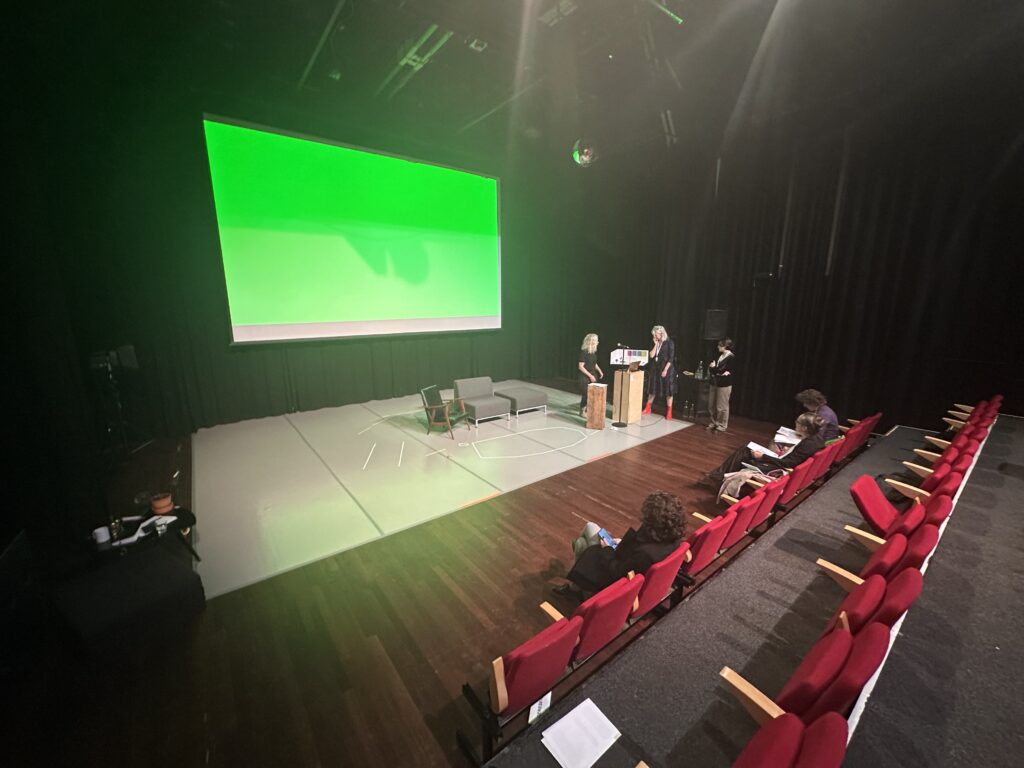
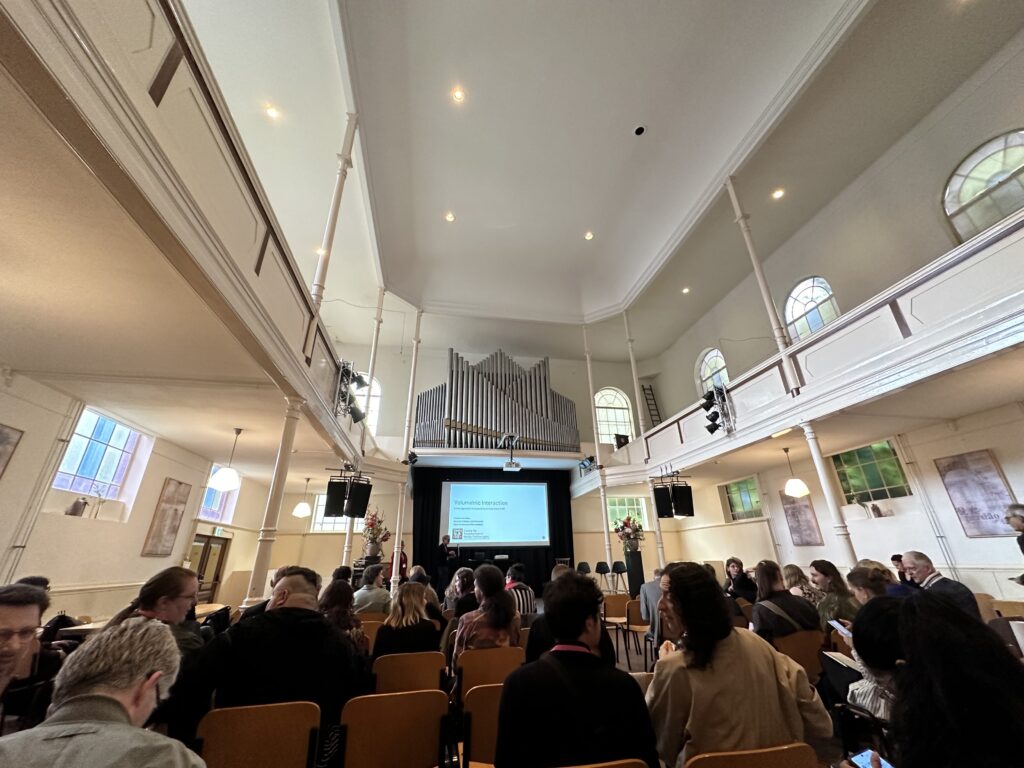
Presentation Content and Ratio
The overall presentations at the conference seemed to be about one-third technology, one-third humanities, and one-third practice. The diversity in presentation styles gave a sense of the wide range of fields represented. For instance, it was not uncommon for presenters to bring printed manuscripts and read them out carefully, a style I had rarely seen before, which was surprising.

Participant Diversity
The diversity of participants’ backgrounds was surprising. While I am conducting research that combines dance and technology, there are few researchers like this in Japan. However, at MOCO, there were many researchers who understood both domains, making it seem not particularly unusual, which was somewhat reassuring. Additionally, there were instances where the first author was a dancer and the second author an engineer, highlighting the interdisciplinary nature of the conference. Although the terminology used by different participants varied, they advanced their understanding through dialogue, gradually progressing their research. Not only researchers but also practitioners such as choreographers, artists, and directors participated, creating an environment conducive to immediate practical application and collaboration. This diversity felt akin to the direction aimed at by the Japan Dance Society [3] that I helped establish. I also felt that my department, the Department of Cultural Information Engineering, Faculty of Interdisciplinary Engineering [4], should aim for a similar presentation ratio. To better understand research that focuses primarily on non-technological aspects, I plan to review the papers presented at MOCO later.
(Side Note) During MOCO, the SPRING FESTIVAL event was held in the city, featuring numerous dance performances, some of which were highlighted by MOCO for its attendees. One particularly memorable piece was “Una Isla” [5], a stage performance created through dialogue with AI, showcasing a very creative content. If you have the opportunity, I highly recommend seeing it!
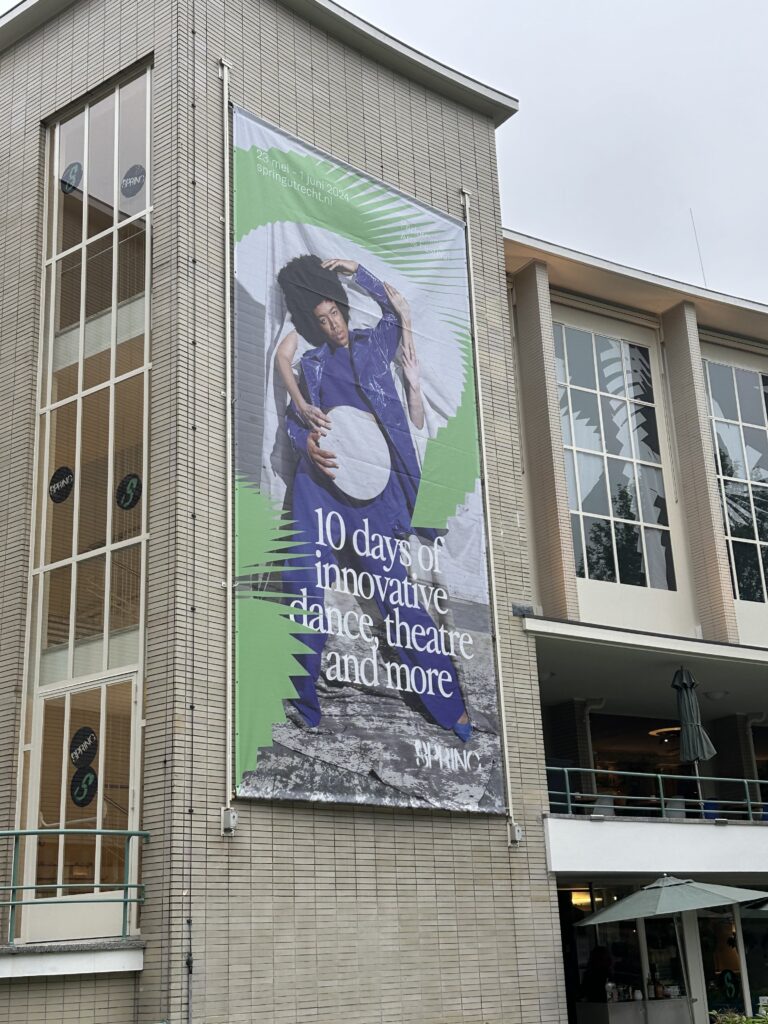

Returning to the participants, when the chairperson called for first-time attendees to raise their hands, it seemed that about 80% of the participants were attending for the first time. The existence of a conference that attracts so many first-time attendees in the context of Movement & Computing itself felt significant.
My Presentation
I presented under the title “Automatic Dance Video Segmentation for Understanding Choreography,” proposing a model to estimate appropriate segmentation points for choreography to make it easier to learn. For more details, please visit the project page [7].
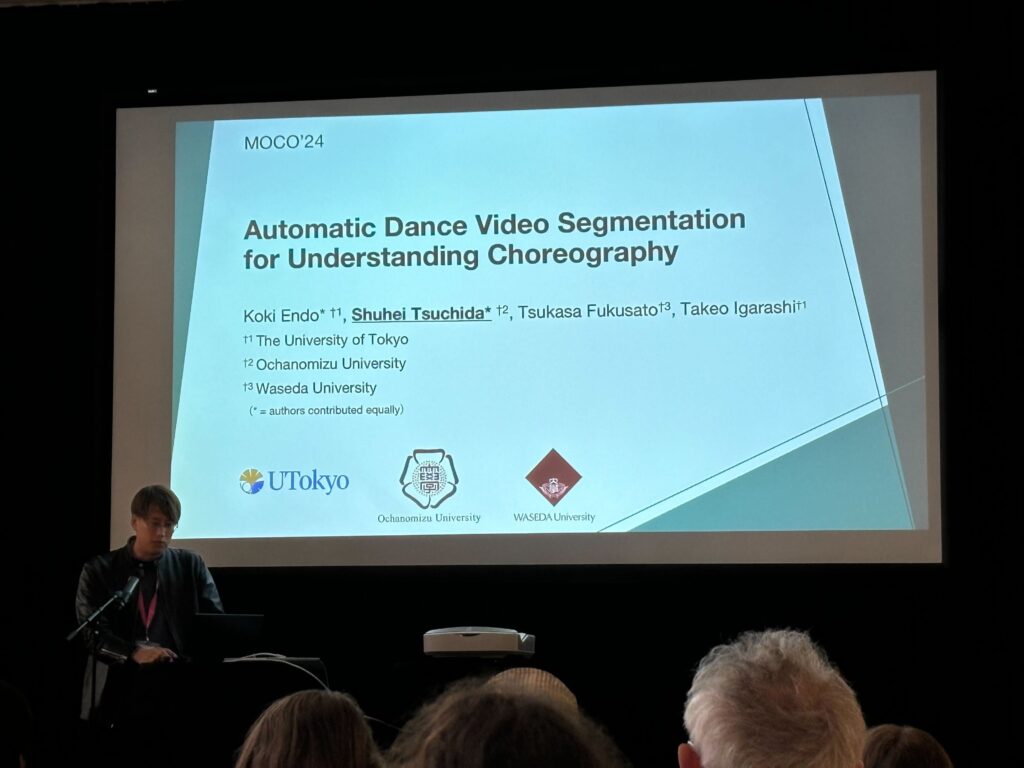
After the presentation, there was no immediate Q&A session; instead, all presenters from that session were brought on stage for a panel discussion.
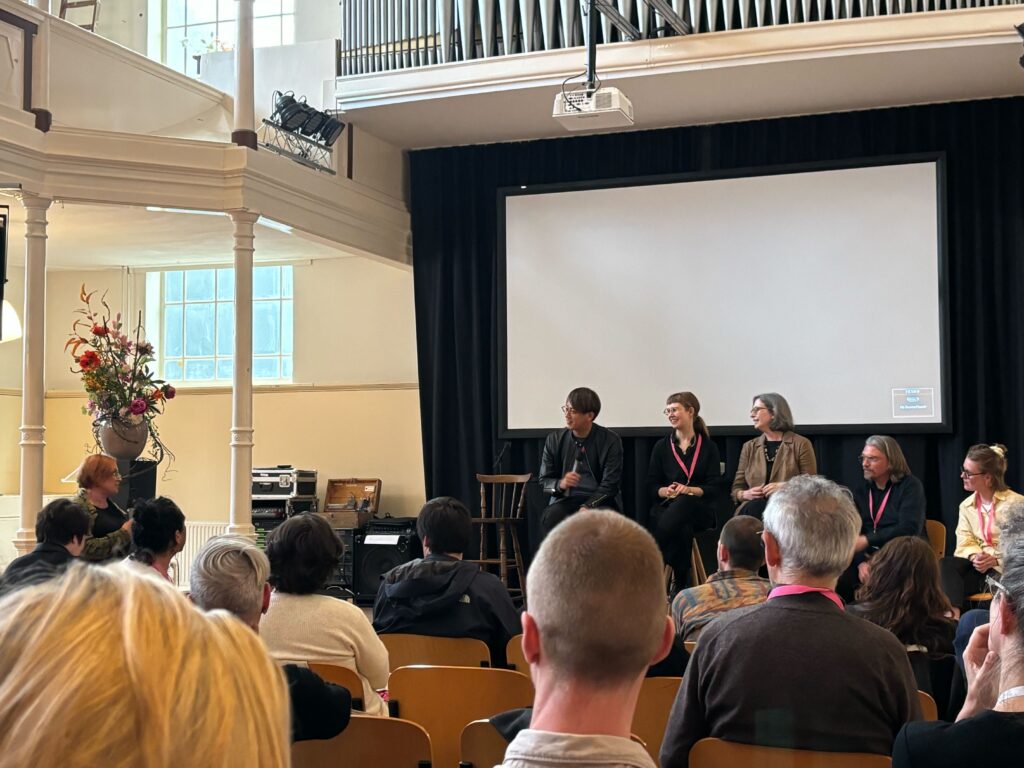
With concerns about my English skills, I sought help from the chairperson and other committee members before it began. They reassured me, saying, “Many people are not native English speakers, so don’t worry!” which paradoxically made me even more anxious. In other sessions, there were broad questions posed to the entire session, such as whether their research addressed specific or general problems. These somewhat abstract questions made me feel that participating in such discussions with my current English skills would be challenging. However, the questions directed at me during my panel discussion were quite specific, asking detailed questions about the AIST Dance DB [8], such as how we recruited dancers and determined genres. This specificity helped me a lot.
After the presentation, I was fortunate to be approached by many people. It was the first time I received so much feedback at an overseas presentation, which made me very happy. Particularly from those using the AIST Dance DB, I received reactions of surprise and interest, which was very gratifying. Creating the AIST Dance DB was a painstaking and challenging task, but five years later, it has become a representative piece of my research. It underscored the importance of having a signature piece of research when engaging in international exchanges.
Conference Discussion
At the end of the conference, there was about an hour-long session on the future of MOCO. Unfortunately, my English skills were insufficient to fully grasp the entire discussion, but I picked up a few points.

The audience actively participated in the discussion
Awards
The committee mentioned they do not provide awards to avoid making it too competitive, contrasting with other conferences that are increasing their awards. However, they acknowledged that it needs to be reconsidered, given its impact on young researchers’ careers. This seemed like a difficult issue.
Presentation Styles
There was a session called Practice Work, where each work had a dedicated small room for attendees to experience it. I found this meaningful, and there was a discussion about having a place to practice and showcase performances, which I highly resonated with as I had proposed something similar at the Japan Dance Society.
Conference Impact
There was a question about the impact this conference provides. Committee members discussed various points, emphasizing the importance of gathering in such a space for these discussions.
MOCO Asia
There was talk about the need to hold something like MOCO Asia, similar to SIGGRAPH Asia. Being from Asia, I felt a strong frustration at not being able to participate in this discussion due to my limited English skills. I hope to be more proactive in future discussions. Hosting it in Asia seems challenging due to the difficulty of practitioner participation, but I would love to host it someday, although I would need to be more fluent in English.
(Side Note) I met Mr. Tokita from the Ishiguro Lab at the University of Tokyo, who suggested that more Asians should participate, which I agreed with. I hope to send members from the Tsuchida Lab regularly as long as the budget permits.
Keywords
Keywords such as Kinesthetic sympathy and Embodiment knowledge frequently came up. I plan to understand these through the papers presented.
Connections
One of the biggest gains was meeting Sarah Fdili Aloui [9], whom I had admired for a long time. She is a regular contributor to CHI with many dance-related papers, and I had always wanted to meet her. Thanks to Mr. Kato from AIST, who is currently staying at the university where Sarah was affiliated, I could contact her indirectly beforehand. When we met, I could start the conversation on a friendly note, saying, “I am a former colleague of Mr. Kato!” She mentioned that she is considering traveling around Japan for about a month before next year’s CHI. I hope to connect her with Japanese researchers during her visit.
Conclusion
MOCO featured many stimulating studies, and I think it is worthwhile to participate if you are engaged in research involving movement information. Especially for those researching dance, it can be incredibly enriching! My perspectives and actions during the conference have shifted slightly due to my involvement in establishing a new department and running a laboratory. Personally, I found MOCO very engaging and plan to participate regularly, and hopefully host it in Japan someday.


Thank you very much for your support during my stay!
[1] International Conference on Movement and Computing(MOCO), https://www.movementcomputing.org/
[2] Qiushi Zhou, Cheng Cheng Chua, Jarrod Knibbe, Jorge Goncalves, and Eduardo Velloso. 2021. Dance and Choreography in HCI: A Two-Decade Retrospective. In Proceedings of the 2021 CHI Conference on Human Factors in Computing Systems (CHI ’21). Association for Computing Machinery, New York, NY, USA, Article 262, 1–14. https://doi.org/10.1145/3411764.3445804
[3] Shuhei Tsuchida, Haomin Mao, Hideaki Okamoto, Yuma Suzuki, Rintaro Kanada, Takayuki Hori, Tsutomu Terada, and Masahiko Tsukamoto. 2022. Dance Practice System that Shows What You Would Look Like if You Could Master the Dance. In Proceedings of the 8th International Conference on Movement and Computing (MOCO ’22). Association for Computing Machinery, New York, NY, USA, Article 15, 1–8. https://doi.org/10.1145/3537972.3537991
[4] 日本ダンス研究会, https://jsds.info/
[5] 共創工学部, https://www.te.ocha.ac.jp/special/
[6] Una isla, https://www.srserrano.com/es/una-isla-2/
[7] https://shuhei2306.com/research/automatic_segmentation.html
[8] AIST Dance DB, https://aistdancedb.ongaaccel.jp/
[9] Sarah Fdili Alaoui, https://saralaoui.com/